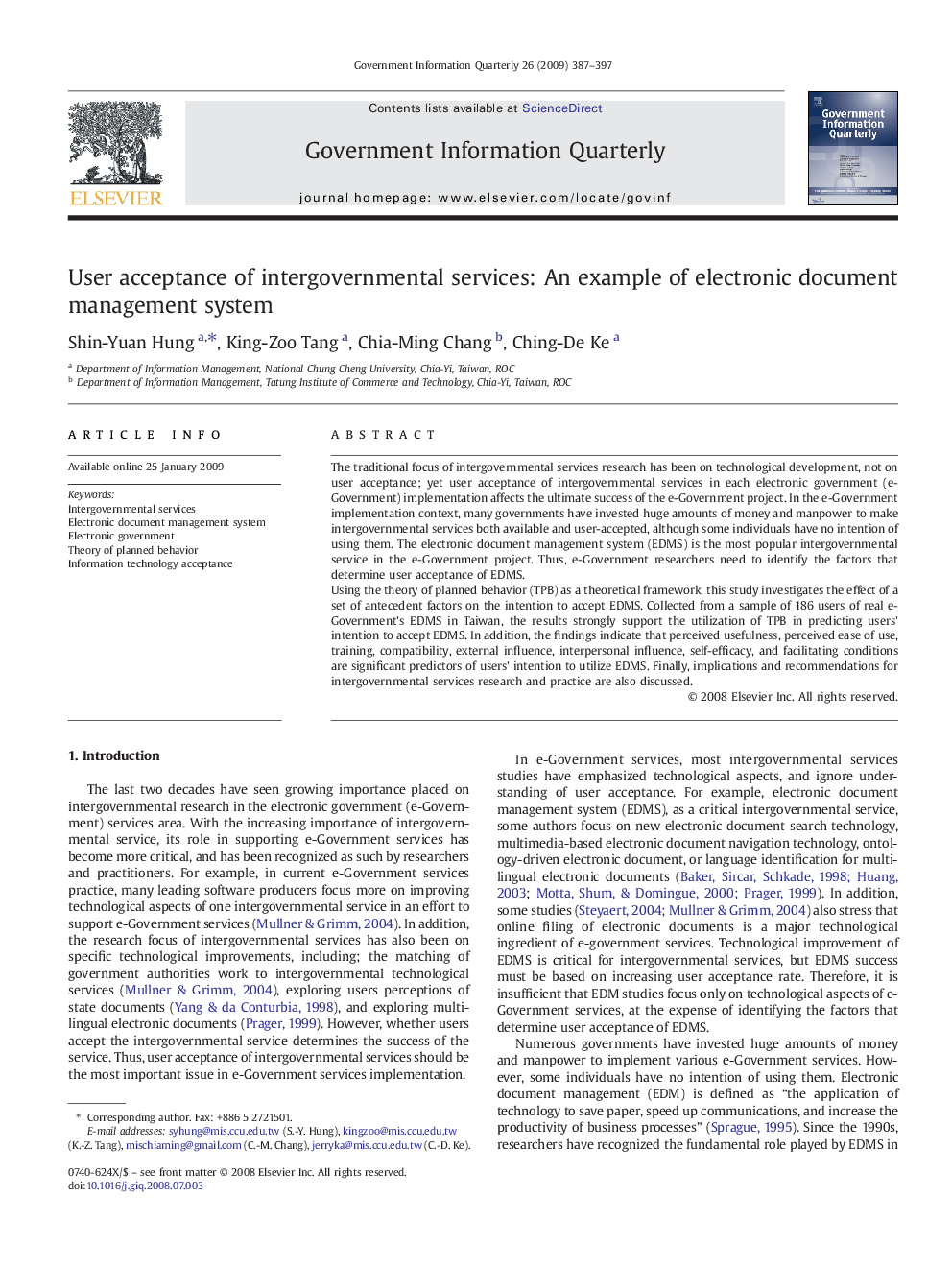| کد مقاله | کد نشریه | سال انتشار | مقاله انگلیسی | نسخه تمام متن |
|---|---|---|---|---|
| 1024957 | 941776 | 2009 | 11 صفحه PDF | دانلود رایگان |

The traditional focus of intergovernmental services research has been on technological development, not on user acceptance; yet user acceptance of intergovernmental services in each electronic government (e-Government) implementation affects the ultimate success of the e-Government project. In the e-Government implementation context, many governments have invested huge amounts of money and manpower to make intergovernmental services both available and user-accepted, although some individuals have no intention of using them. The electronic document management system (EDMS) is the most popular intergovernmental service in the e-Government project. Thus, e-Government researchers need to identify the factors that determine user acceptance of EDMS.Using the theory of planned behavior (TPB) as a theoretical framework, this study investigates the effect of a set of antecedent factors on the intention to accept EDMS. Collected from a sample of 186 users of real e-Government's EDMS in Taiwan, the results strongly support the utilization of TPB in predicting users' intention to accept EDMS. In addition, the findings indicate that perceived usefulness, perceived ease of use, training, compatibility, external influence, interpersonal influence, self-efficacy, and facilitating conditions are significant predictors of users' intention to utilize EDMS. Finally, implications and recommendations for intergovernmental services research and practice are also discussed.
Journal: Government Information Quarterly - Volume 26, Issue 2, April 2009, Pages 387–397